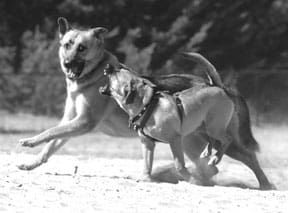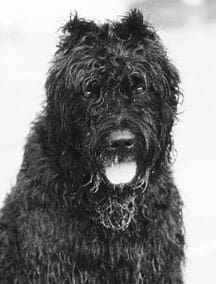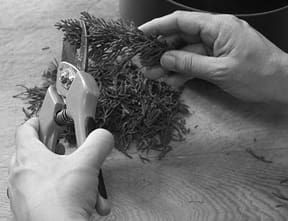[Updated April 24, 2018]
Cosmetic surgery for dogs, including docking tails and cropping ears, is increasingly controversial. Even the usually conservative American Veterinary Medical Association (AVMA) has stated that the procedures are “not medically indicated nor of benefit to the patient. These procedures cause pain and distress, and, as with all surgical procedures, are accompanied by inherent risks of anesthesia, blood loss, and infection.”
It is estimated that more than 130,000 puppies in the United States undergo these procedures each year – procedures that have been illegal in other countries for years. In fact, England has banned ear cropping for more than 100 years. Yet the history of removing parts of tails and ears dates back hundreds of years. The historic reasons for the amputations are often attributed to attempts at preventing injury in fighting or hunting dogs, reducing taxes based on a dog’s tail length, or even preventing rabies.

Despite the arguably ill-founded history of the practices, they have evolved over the years and become part of many breed standards, particularly in the United States. The American Kennel Club supports these practices, stating its position that, “The American Kennel Club recognizes that ear cropping, tail docking, and dewclaw removal, as described in certain breed standards, are acceptable practices integral to defining and preserving breed character and/or enhancing good health. Appropriate veterinary care should be provided.”
Cropping and docking are so prevalent, in fact, that dogs of some breeds are difficult to recognize and identify when they are intact. Imagine a Doberman Pinscher or Boxer with floppy ears and a long tail. Because of aesthetics, these breeds and others routinely lose body parts so that they’ll look like what we expect them to look like.
Most arguments against docking and cropping focus on the pain endured by the puppy during and after the procedure, as well as the simple fact that amputations are cosmetic in nature and therefore unnecessary. However, there are additional issues and potential problems that should be considered before removing dog parts for the sake of looks.
Different Ways We Alter Dog Breeds’ Appearances
About 70 different breeds are subject to tail docking. Puppies usually undergo tail amputation when they are between two and five days of age. The popular belief is that puppies have immature neurological systems and therefore don’t feel the pain at that age. The tails are removed without anesthesia or pain medication by being clamped and then cut off at the prescribed length. Alternatively, a special rubber band may be put around the tail to cut off its blood supply, which eventually kills all of the tissue below the rubber band. The end of the tail will then fall off after several days.
Various breed standards call for tails to be docked at varying lengths. In some breeds, the standard calls for a tail of a specific length; in others, a range is suggested, or the ideal tail is described as being in balance with the dog’s body. In some breeds, an uncropped tail is accepted; in others it is “severely penalized” by judges.
Dewclaw removal is generally done at about the same age as tail docking – again, usually without benefit of anesthesia or pain medication. In some breeds, the standards require that the dewclaws are removed; in other breeds they are tolerated by judges. (Curiously, dogs of at least one breed, the Briard, are disqualified by conformation judges if they do not have the breed’s characteristic double-dewclaws on the rear legs.)
Dewclaws are not just “claws,” but actually a fifth toe. Not all breeds have them, and some breeds have them on just their front paws. On the back paws, dewclaws are vestigial – an evolutionary remnant of ancestors of the dog who had (and used) five toes. These dewclaws have no muscular control; some do not even contain bony tissue or ligaments.
On the front paws, in contrast, some dogs have dewclaws that are capable of muscular control. Unlike the loose and floppy rear dewclaws, the forepaw’s first toe contains bones, muscles, and nerves. Removal of these digits requires (sometimes difficult) surgery by a vet.
Ear cropping is done under anesthesia when pups are older, usually between 9 and 14 weeks of age. Often, postsurgical pain medication isn’t used. Depending on the desired appearance of the cropped ear and the shape of the natural ear, as much as half of the floppy part may be surgically removed. Afterward, the ears are splinted and taped into an erect position for weeks to months, so they will eventually stand on their own.
Is Tail Docking Painful? What About Ear Cropping?
The World Small Animal Veterinary Association cites the possible formation of painful scar tissue, or neuromas, as one reason that tail docking should be made illegal, except for professionally diagnosed therapeutic reasons.
Laurie Edge-Hughes, a physical therapist and instructor in canine rehabilitation, feels that cropping and docking is unnecessary and potentially harmful. She has a Bachelor of Science degree in Physical Therapy, is certified in canine rehabilitation therapy, and has certification from the Acupuncture Foundation of Canada Institute. In her practice at The Canine Fitness Centre in Calgary, she regularly works with dogs who suffer from hypersensitivity and other problems potentially related to their amputated tails, and often theorizes that the problems are related to this scar tissue.
“The contraction or shrinking of the scar may effect a pull on the nerves and hence the dura that surrounds the spinal cord and brain,” she says. The dura is a tough membrane, part of the meninges, which encases and protects the brain and spinal cord.
Edge-Hughes once worked with a Rottweiler who routinely chewed at her stump of a tail. The owners were concerned about the cause of the obsessive behavior and worried that she would hurt herself. When Edge-Hughes sees repeated licking or chewing, or a sudden attacking of a body part, she first investigates neurological pain as a potential source of the problem. This pain can be compared to the pins-and-needles feeling when your hand or foot “falls asleep.”
Edge-Hughes taught the Rottweiler’s owners to apply traction to the tail, through gentle pulling, to stretch out the dura. Theoretically, this process could alleviate any compression caused by scar tissue, thereby eliminating the irritation or pain; in actual fact, the traction stopped the dog’s self-destructive behavior.
In addition to the pain related to the actual amputation and resulting scar tissue, there’s a real possibility that dogs experience phantom pain – a phenomenon well-documented with humans who have lost a body part.
“I work with so many dogs that have significant behavioral changes after TTouch on their missing parts,” says Debby Potts, Tellington TTouch Instructor and co-owner of The Integrated Animal, located in Portland, Oregon. “I can only imagine that they’re experiencing some kind of phantom pain or discomfort. And this can cause seemingly unrelated problems, including behavioral issues.”

Animals hold tension like people do, says Potts. “If you have a stiff neck or pain in a part of your body, does it make you cranky?” Animals are no different from us, she says. In her work on thousands of animals over many years, Potts has found that while lots of dogs may have tension patterns, you’re more likely to see them in dogs who have been docked or cropped.
For example, a Giant Schnauzer was brought to Potts because she was constantly and obsessively whining. Her owners, a husband and wife, could neither find the cause of the problem nor stop the whining. It had become so troublesome that the husband insisted that the dog be re-homed. When Potts started to work on the dog, she found a significant amount of tension around the dog’s cropped ears.
After one session, which included a significant amount of physical work on the head and ears, the Schnauzer’s ears actually appeared longer (due to their unusually relaxed state) – so much so that a person very familiar with the dog didn’t recognize her immediately after the session. More importantly, the whining stopped. Potts suspects that the dog was having the equivalent of tension headaches from all of the tightness around her ears. “That day I think I saved a dog and a marriage, too,” laughs Potts.
Case Study: A Dog With a Phantom Limb
Toby was a young, enthusiastic dog. He had a hard time focusing and was reactive to all kinds of things, including other dogs, and unresponsive to training. His owners were frustrated. When Debby Potts first met Toby, she made note of the fact that his tail had been docked.
She began working on him, using different TTouch techniques. When she started to work on his “phantom tail” – the space where his tail used to be – he turned around to look at her as if he were curious about what she was doing. Potts did TTouches on the existing stump of the tail, and then continued beyond the physical tail into the air where the tail would be had it not been amputated.
“It’s amazing how many dogs with docked tails really clamp it to their body,” says Potts. She recommends gently working with all docked tails, even if there is just one vertebra, to ease the tension. Over and over she has seen noticeable changes in dogs, in their bodies, movement, and demeanor after working with their existing and phantom tails.
After Toby’s session, he was more focused, able to stand in balance, and less likely to pull on his leash. “It’s not uncommon for a dog to act more balanced after this kind of work,” says Potts. She does add that she hasn’t ever just worked on the tail or other amputated part of an animal, but regularly sees a clear reaction from dogs when working on their phantom parts, such as how Toby responded by looking at what she was doing.
This can look a little odd, Potts admits. “When I teach people how to work on their dog’s phantom parts, I usually suggest they do it in the privacy of their own homes!” She adds that it’s important to believe that you’re really doing it and can “see” the tail as if it were there. Just moving the hand and fingers around the area doesn’t have the same impact, she says.
Tails Improve Dogs’ Balance
Walk along a curb or balance beam with your arms crossed in front of you. Now do it with your arms free at your sides and using them for balance. Wasn’t that easier? Dogs use their tails in much the same way, to provide balance and stability when moving over difficult or rough terrain.
When dogs don’t have tails to provide a counterbalance and rudder for movement, something has to give.
“If you take away the ability to shift weight or compensate for balance displacement by use of the tail mechanism, then the forces that would otherwise be absorbed or counteracted through the tail need to be shifted elsewhere,” says Edge-Hughes. She speculates that the stress or pressure could then fall on the cruciate ligament or patella, hip, or hock joints, or even travel up the chain into the sacroiliac joints or spine, potentially causing or contributing to seemingly unrelated orthopedic injuries.
Cruciate disease and other orthopedic problems can have many contributing factors, and can occur in dogs both with tails and without tails. Yet, for dogs, who evolved to have tails, having them removed may add another cause of injury.
Edge-Hughes is also concerned about docked dogs who are unable to use tail wagging (with a tail of normal length and without scar tissue) to stretch and flex the dura, keeping it pliable. This could be a particular problem when a dog has a slow, progressive disc lesion, such as a bulging disc, which slowly compresses the dura and spinal cord over time. “The dura might become inflamed more easily if it is not as pliable. This may lead to a faster onset of neurological signs and symptoms that accompany disc lesions,” she explains.
Veterinarian Robert Wansborough, in a paper published in 1996 in the Australian Veterinary Journal, describes how the tail is interconnected with the physiological structure of the entire hind end of the dog. He speculates that removing the tail may change the muscle tone and contribute to perineal hernias and incontinence.
Dewclaws May Help Balance Too
Dewclaws are another frequently amputated dog part that are often thought to be useless, but in fact, the front dewclaws do have a purpose says Chris Zink, DVM, PhD. “The function of front dewclaws is to prevent torque on the leg,” she says. “There are five tendons attaching the dewclaw to five muscle bundles, supporting this functionality. When a dog is running, the dewclaw comes into contact with the ground. If the dog needs to turn, the dewclaw digs into the ground to support the lower leg and prevent torque.”
“The rear dewclaws are vestigial in most breeds; that is not true for the front dewclaws, which should be more correctly called digits or thumbs,” says Dr. Zink. She works exclusively with performance dogs and has found that if a dog doesn’t have dewclaws, the leg will twist when turning, which applies significant pressure on the leg, to the toes, carpus, elbow, and shoulders. The repeated twisting and pressure can ultimately cause chronic painful conditions, especially carpal arthritis. “Of the over 30 dogs I have seen with carpal arthritis, only one has had dewclaws. All the others had them removed,” says Dr. Zink.
Docking and Cropping from A Traditional Chinese Medicine Perspective
Beyond the physical balance and movement aids provided by tails and dewclaws, removing these parts, and ears too, may cause a different type of imbalance. The removal of parts as a result of docking and cropping may interfere with well-being and health from a Chinese medicine perspective. Scars or the absence of body parts that are normally part of a meridian or specific acupuncture points may adversely affect the organ systems associated with the meridian or energy channel.
An acupuncture map of the ear will show points that correspond with the entire body. In fact, there are over 200 acupuncture points on the ear – it is often described as “the meeting place of all the channels of the body.” In addition, the ear is part of the kidney meridian. When a dog’s ear is partially amputated, as with cropping, these points are removed, and scar tissue is created on the new edge of the ear. The removal of dewclaws creates a scar that may affect the Large Intestine meridian, while the Governing Vessel meridian ends on the tail.
Dogs Use Their Tails and Ears as Communication Tools
Dogs use both their tails and ears extensively for communication, with each other and with humans. Norwegian trainer Turid Rugaas describes many different positions for tails and ears in her work on “calming signals” of the dog, and how dogs use these parts to communicate.
Think for a moment about all of the positions floppy ears can take. The ears can be forward and the base held upright, or they can be soft and low against the head, even pinned back, tight to the head. Each subtly different position communicates something different, from aggression to fear, contentment to appeasement.
The tail, too, acts as a key communication device for dogs. Different types of tail wagging and carriage may indicate happiness, stress, anxiety, fear, or other emotions. Dogs without tails are limited in this type of communication, and have to rely on other signals, which may be more difficult for humans and other dogs to interpret.
With all of the probable and possible problems associated with cropping and docking, how important is it to keep certain breeds of dogs looking a particular way?
The Legal Picture of Breed-Specific Cosmetic Alterations
A number of countries – including South Africa, Greece, Germany, Switzerland, Finland, Sweden, Norway, Denmark, Israel, the Virgin Islands, and parts of Australia – have made docking and cropping illegal, with only rare allowable exceptions for hunting dogs or for a therapeutic necessity.
A number of these countries have even made it illegal to import or show docked or cropped dogs, so that breeders couldn’t get around the law by having the dogs docked or cropped in another country and then imported for showing purposes.
It is expected that all members of the European Union will eventually pass laws against cropping and docking because of the provisions made by the European Convention for the Protection of Pet Animals. The convention prohibits “surgical operations for the purpose of modifying the appearance of a pet animal or for other non-curative purposes, including tail docking and ear cropping.
In the United States, however, there is no federal legislation. Legal challenges surrounding the issue are usually brought about in relationship to state anti-cruelty laws. Dog owners have found themselves on both sides of the law.
A number of individuals have been found guilty of animal cruelty for performing at-home cropping and docking. During 1988 a man in Texas was found guilty and sentenced to six months in jail for cropping the ears of his dog at home. A defendant in Indiana was found guilty of animal cruelty and practicing veterinary medicine without a license after an amateur ear cropping procedure. In Michigan, two separate cases found individuals guilty for botched tail docking using the banding method.
Several years ago, New York resident Jon Hammer approached the issue from a different perspective. He brought a discrimination suit against the American Kennel Club. Hammer has an undocked Brittany Spaniel, and because of the AKC’s breed standard, the Spaniel was effectively knocked out of competition due to the length of his tail. Hammer’s case argued that the AKC was forcing him to violate New York’s anti-cruelty law by requiring docking. Hammer did not prevail in the case, but it did bring the topic to the spotlight.
Some states and cities are legislating against cosmetic surgery, including docking and cropping. In most cases, the laws fall under anti-cruelty statutes. Some states have laws against these procedures, although they are rarely enforced. Maine prohibits ear cropping, deeming it to be unlawful mutilation. Other states require the procedures to be performed only by licensed veterinarians.
West Hollywood, California, recently expanded previous legislation that banned de-clawing in cats, to include tail docking, ear cropping, and other cosmetic surgeries. The Association of Veterinarians for Animal Rights sponsored a bill in the California legislature this year to ban ear cropping. The bill was suspended in May, and may be revived during the next legislative session.
DOCKING AND CROPPING YOUR DOG: WHAT TO DO
1. Don’t dock or crop! Insist that your breeder leave your puppy au naturel.
2. Try different touch therapy or training techniques to increase your docked or dewclaw-less dog’s balance.
3. Let the AKC and breed clubs know if you’d like to see changes in breed standards so dogs with their natural parts aren’t penalized in the show ring.
Shannon Wilkinson is a TTouch practitioner, life coach, and freelance writer who has enjoyed living with a floppy-eared Great Dane and Boxer in Portland, Oregon.














